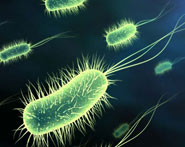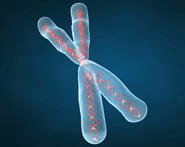


 النبات
النبات
 الحيوان
الحيوان
 الأحياء المجهرية
الأحياء المجهرية
 علم الأمراض
علم الأمراض
 التقانة الإحيائية
التقانة الإحيائية
 التقنية الحيوية المكروبية
التقنية الحيوية المكروبية
 التقنية الحياتية النانوية
التقنية الحياتية النانوية
 علم الأجنة
علم الأجنة
 الأحياء الجزيئي
الأحياء الجزيئي
 علم وظائف الأعضاء
علم وظائف الأعضاء
 الغدد
الغدد
 المضادات الحيوية
المضادات الحيوية|
Read More
Date: 2025-02-15
Date: 2025-01-28
Date: 19-2-2016
|
Hyperplastic polyp
• Common polyp which occurs mostly in the antrum or body.
• Non- neoplastic reactive lesion thought to represent an exaggerated regenerative response to mucosal injury.
• Often associated with an underlying gastric pathology such as Helicobacter or autoimmune gastritis.
• histology shows a polyp containing a dilated, elongated, tortuous foveolar epithelium in an oedematous, inflamed lamina propria.
Fundic gland polyp
• Common polyp which occurs only in the body or fundus.
• Most frequently seen in patients taking proton pump inhibitors. Can occur sporadically or in association with familial adenomatous polyposis (FAP).
• FAP- associated polyps are more likely to be multiple and occur at a younger age.
• Sporadic polyps are not normally associated with any underlying mucosal pathology.
• histology shows a polyp containing cystically dilated fundic glands lined by flattened parietal and chief cells.
Gastric adenoma
• Uncommon neoplastic polyp that can occur throughout the stomach.
• Microscopically composed of dysplastic glands with stratified hyperchromatic nuclei.
• two main types are described— an intestinal and a foveolar type.
• Intestinal types are far more likely to show high- grade dysplasia or harbour gastric carcinoma than the foveolar type.
Gastric xanthoma
• Uncommon polyp that occurs anywhere in the stomach.
• Appears as a pale- yellow nodule due to its lipid content.
• histology shows numerous lipid- laden macrophages in the lamina propria.
Inflammatory fibroid polyp
• rare lesion which occurs mostly in the antrum.
• histology shows a submucosal lesion composed of bland spindle cells arranged around prominent vessels, all set in a loose myxoid stroma containing conspicuous eosinophils.



|
|
|
|
منها نحت القوام.. ازدياد إقبال الرجال على عمليات التجميل
|
|
|
|
|
|
|
دراسة: الذكاء الاصطناعي يتفوق على البشر في مراقبة القلب
|
|
|
|
|
|
|
مركز الكفيل للإعلان والتسويق ينهي طباعة الأعمال الخاصة بحفل تخرج بنات الكفيل الثامن
|
|
|